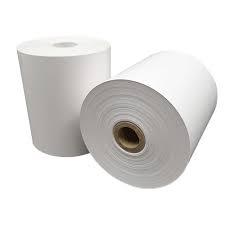Woodfree Paper Market Growth Driven by Sustainable Practices and Eco-Friendly Manufacturing Trends Globally

The woodfree paper market is witnessing robust growth, led by a global shift toward sustainability and eco‑friendly production. As businesses and consumers increasingly prioritize environmental responsibility, woodfree paper stands out as a high‑quality, greener choice for a wide range of applications—from premium publishing and high‑end packaging to commercial printing and branding.
1. Embracing Green Manufacturing Across the Supply Chain
Sustainability is the backbone of modern manufacturing, and woodfree paper production is undergoing transformative changes to minimize environmental impact:
-
Recycled Fiber Integration: Manufacturers are steadily increasing the use of post‑consumer and pre‑consumer recycled fibers, significantly reducing reliance on virgin wood pulp.
-
Cleaner Production Techniques: Innovations in pulping, bleaching, and coating—such as elemental chlorine‑free (ECF) and totally chlorine‑free (TCF) processes—are cutting water and chemical usage.
-
Lower Energy Footprint: Adoption of energy‑saving equipment, heat recovery systems, and renewable energy sources is reducing the carbon footprint associated with paper mills.
2. Eco‑Certified Products Gain Market Advantage
Eco-labels and sustainability certifications are becoming central to consumer trust and brand positioning:
-
Forest Stewardship Council (FSC), Programme for the Endorsement of Forest Certification (PEFC), and other labels boost confidence in responsible sourcing.
-
Green Branding: Companies embedding eco‑credentials into their packaging gain visibility and preference among environmentally conscious consumers—especially in luxury, publishing, and direct‑mail markets.
3. Recycling and the Circular Economy in Focus
Woodfree paper is key to circular economy principles by supporting product life extension and secondary use:
-
Enhanced Recyclability: Products designed for cleaner separation and minimal contaminant use (like mono‑material packaging or low‑adhesive coatings) facilitate efficient recycling.
-
Waste Recovery: Many mills now operate closed‑loop systems to reclaim production scrap, trim, and returns for re‑processing, reducing raw material waste and boosting resource efficiency.
4. Innovation in Sustainable Paper Design
New technological advancements are enriching woodfree paper’s eco‑performance without compromising quality:
-
Lightweight Grades: Thinner, lighter paper options meet high standards of print quality and durability but significantly lower material and transport costs.
-
Biodegradable & Compostable Finishes: Plant‑based coatings and water‑soluble adhesives enhance end-of-life disposal, especially in composting systems.
-
Advanced Surface Treatments: Textures and low‑VOC coatings deliver premium tactile feel and printability using fewer resources and chemicals.
5. Global Growth Patterns Anchored in Sustainability
The eco-driven transformation of the woodfree paper market is unlocking growth across regions:
-
North America & Europe: Strict regulatory frameworks and consumer awareness are driving investment in eco-certified, high‑quality woodfree products for print and packaging.
-
Asia-Pacific: Rapidly growing markets like India and China are increasingly prioritizing sustainable packaging solutions, with manufacturing capacity expanding to meet domestic demand.
-
Latin America & Africa: As recycling infrastructure improves, interest in responsible paper sourcing and local production of woodfree grade paper is rising.
6. Strategic Investments Fueling Green Momentum
Key players are committing to sustainability through significant investments:
-
Upgrading Mills: Capital is flowing into modernizing production lines to adopt clean, energy-efficient technologies.
-
Recycling Infrastructure: New sorting, pulping, and fiber recovery systems strengthen closed-loop capabilities and reduce reliance on fresh raw materials.
-
R&D Initiatives: Innovation centers and cross-industry collaborations are experimenting with materials like agricultural residues and algae‑derived fibers to enhance sustainability.
7. Meeting Consumer & Regulatory Expectations
As demand for greener solutions intensifies, woodfree paper meets rising expectations on multiple fronts:
-
Consumer Behavior: Eco-aware consumers—particularly in luxury goods, gourmet food packaging, and specialty print—prefer materials that align with their values.
-
Regulatory Compliance: Tightening environmental regulations, like single-use bans and packaging waste directives, reinforce demand for recyclable, compostable, and low-impact materials.
8. Positioning for Long-Term, Sustainable Growth
To maintain momentum, manufacturers and brands should double down on:
-
Certification and Transparency: Clear labeling and traceability build credibility and openness with customers.
-
Closed-Loop Partnerships: Collaborating across industries—packaging producers, recyclers, municipalities—supports system-wide circularity.
-
Market Education: Educating stakeholders about the environmental and performance benefits of woodfree paper helps drive adoption across sectors.
Conclusion
Sustainability is not just a trend—it’s the driving force redefining the woodfree paper market. From cleaner production techniques and recycled content to eco-labels and lifecycle design, the sector is evolving to meet the expectations of a greener world. As industries demand higher standards in environmental performance without sacrificing quality, woodfree paper’s eco‑balanced promise positions it for resilient and responsible global growth.
- Vibnix Blog
- Politics
- News
- Liberia News
- Entertainment
- Technology
- Formazione
- Art
- Causes
- Crafts
- Dance
- Drinks
- Film
- Fitness
- Food
- Giochi
- Gardening
- Health
- Home
- Literature
- Music
- Networking
- Altre informazioni
- Party
- Religion
- Shopping
- Sports
- Theater
- Wellness


